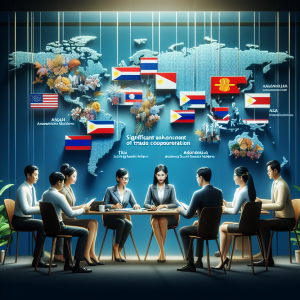As 2025 unfolds, the tourism landscape in Southeast Asia is witnessing significant shifts, with Malaysia emerging as a frontrunner in attracting visitors to Thailand, outpacing China in the latest tourism data. This development comes amid a backdrop of economic headwinds and escalating global trade conflicts, which are reshaping travel dynamics across the region.
The latest figures indicate that Malaysia has successfully attracted a substantial number of tourists to Thailand, surpassing the influx from China, traditionally a dominant source market. This shift can be attributed to several factors, including Malaysia’s strategic positioning, competitive travel offerings, and a growing preference for regional travel among Southeast Asian nations. As the global economy remains robust, albeit with vulnerabilities, travelers are increasingly seeking budget-friendly options, benefiting destinations that offer value for money.
In light of the ongoing geopolitical tensions, particularly those related to U.S. protectionist measures, the travel industry is experiencing considerable volatility. The World Travel & Tourism Council (WTTC) highlights that while the global economy continues to recover post-pandemic, the travel sector must adapt to these changing circumstances. Regions with diverse economic bases, like Malaysia, are proving more resilient compared to those heavily reliant on traditional manufacturing or single-market tourism.
Economic Influences on Travel Behavior
The economic conditions in major markets, especially China, have a profound impact on travel patterns. Although China’s economy is gradually recovering, consumer confidence remains cautious. This hesitance has led to a decline in outbound tourism, prompting the Chinese government to introduce initiatives such as an expanded visa-free entry program. Such measures aim to stimulate domestic tourism and encourage international travel, yet they have not fully compensated for the reduced travel appetite among Chinese tourists.
The Rise of Sustainable Tourism
Another notable trend is the increasing emphasis on sustainable tourism. The WTTC’s "Destination 2030" report underscores the importance of cities being prepared to support sustainable travel growth. As travelers become more environmentally conscious, destinations that prioritize sustainability are likely to attract more visitors. Malaysia’s focus on eco-friendly initiatives and sustainable practices is enhancing its appeal, positioning it as a preferred choice for tourists looking for responsible travel options.
Conclusion
In conclusion, the evolving landscape of tourism in Southeast Asia is marked by Malaysia’s ascendance in Thai tourism data, reflecting broader economic trends and shifting consumer preferences. As the region navigates the complexities of trade conflicts and economic challenges, the focus on sustainability and diversified tourism strategies will be crucial for long-term growth. The interplay between these factors not only reshapes the travel industry but also highlights the resilience of nations that adapt to the changing dynamics of global travel.





